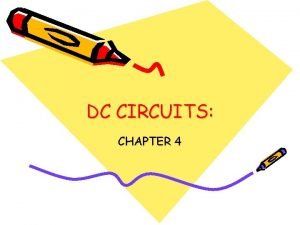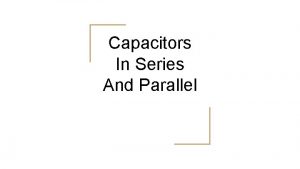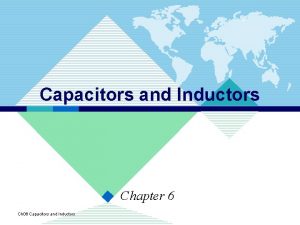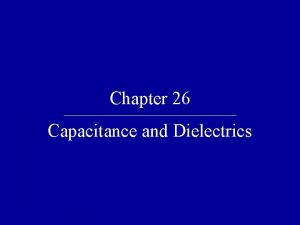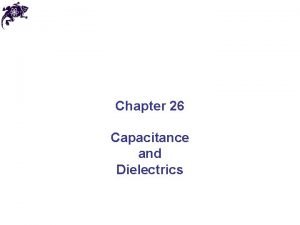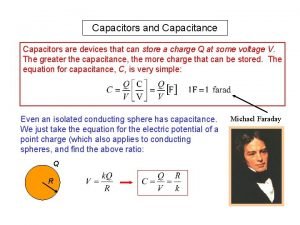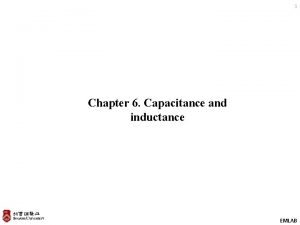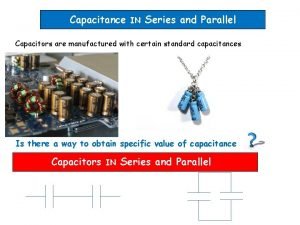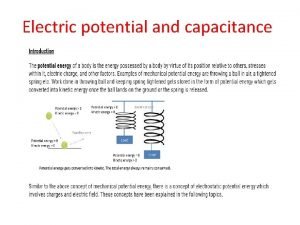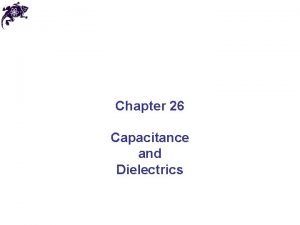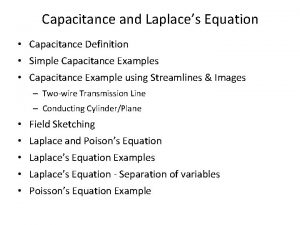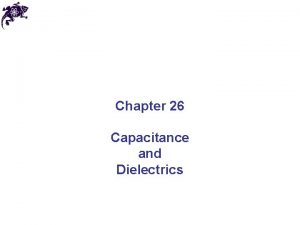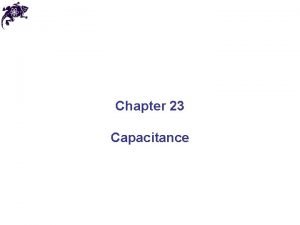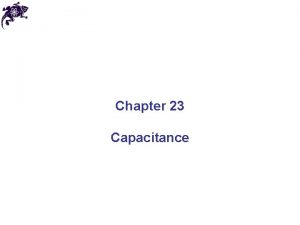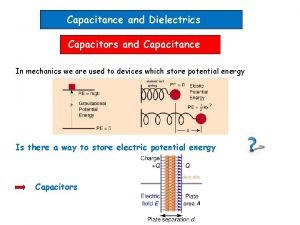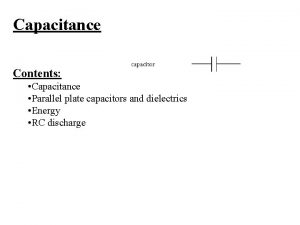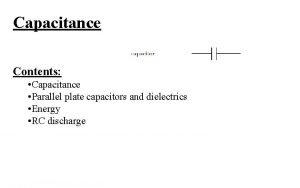6 Capacitance and capacitors 6 1 Capacitors Q










- Slides: 10

6. Capacitance and capacitors 6. 1 Capacitors +Q +Q -Q Symbol: 6. 2 Capacitance Definition: Units: [C]= 1 F = 1 C / V C is independent from: Q and ΔV (ΔV is always proportional to Q) C depends on: • the geometry of the system • the dielectric between the conductors -Q

6. 3 Parallel plate capacitor b Large plates of area A separated by a small distance d, can be considered as infinite planes. +Q d a -Q 6. 3 a Cylindrical capacitor: 6. 3 b Spherical capacitor:

Example (Variable capacitor): A parallel plate capacitor is connected to a battery that produces a constant potential difference across its plates. If we push the plates of the capacitor together so that the distance between them is halved, the charge on the capacitor changes by: A. ½ B. 1 C. 2 d d/2 C + battery C 2 C V - const Q = CV Q 2 Q Example: Now, we disconnect the capacitor from the battery, and then push the plates together so that the distance between them is halved. What happened with charge and with potential difference between plates?

6. 4 Capacitors with dielectrics If V=const +Q -q +q -Q 6. 5 Dielectrics The molecules in a dielectric tend to become oriented in a way that reduces the external field. Overall, there is a slight accumulation of positive charge on one side and negative on the other side, but it’s much smaller than in conductors (with induction)

Glass of pure water O H H “Normal” molecule of water Positive Negative Neutral What happens if you bring a charged rod near a neutral insulator? Charges are not free to move. They can move a little… Molecule of water near a positively charged rod (polarized molecule) Glass of polarized pure water

6. 6 Energy stored in an electric field a) Energy stored in a capacitor b) Energy density +Q -Q V

6. 7 Capacitors in parallel A● C 1 +Q 2 Q 1 Q 2 C 2 B● A● +Qeq B● Ceq

6. 8 Capacitors in series … C 1 C 2 C 3 And remember that: Note that Use series connection to decrease capacitance

Example: Which of the circuits has the largest capacitance? All capacitors are identical. A B D C

Example: Which of the following capacitances can be achieved with series or parallel combinations of three 10 p. F capacitors? A. 3. 33 p. F B. 6. 67 p. F C. 15. 0 p. F D. 30. 0 p. F E. All of the above See previous slide!
